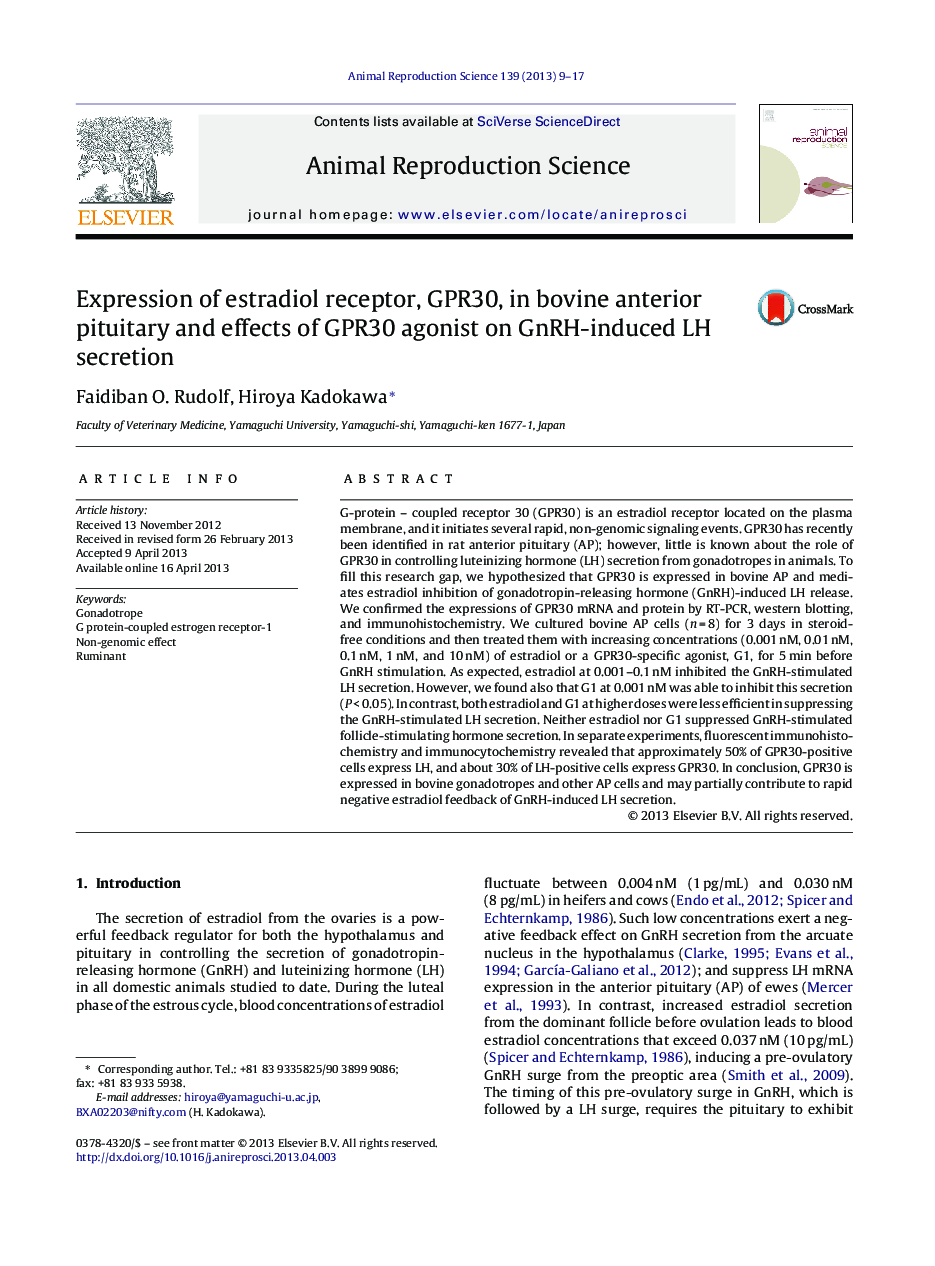| Article ID | Journal | Published Year | Pages | File Type |
|---|---|---|---|---|
| 2073027 | Animal Reproduction Science | 2013 | 9 Pages |
G-protein – coupled receptor 30 (GPR30) is an estradiol receptor located on the plasma membrane, and it initiates several rapid, non-genomic signaling events. GPR30 has recently been identified in rat anterior pituitary (AP); however, little is known about the role of GPR30 in controlling luteinizing hormone (LH) secretion from gonadotropes in animals. To fill this research gap, we hypothesized that GPR30 is expressed in bovine AP and mediates estradiol inhibition of gonadotropin-releasing hormone (GnRH)-induced LH release. We confirmed the expressions of GPR30 mRNA and protein by RT-PCR, western blotting, and immunohistochemistry. We cultured bovine AP cells (n = 8) for 3 days in steroid-free conditions and then treated them with increasing concentrations (0.001 nM, 0.01 nM, 0.1 nM, 1 nM, and 10 nM) of estradiol or a GPR30-specific agonist, G1, for 5 min before GnRH stimulation. As expected, estradiol at 0.001–0.1 nM inhibited the GnRH-stimulated LH secretion. However, we found also that G1 at 0.001 nM was able to inhibit this secretion (P < 0.05). In contrast, both estradiol and G1 at higher doses were less efficient in suppressing the GnRH-stimulated LH secretion. Neither estradiol nor G1 suppressed GnRH-stimulated follicle-stimulating hormone secretion. In separate experiments, fluorescent immunohistochemistry and immunocytochemistry revealed that approximately 50% of GPR30-positive cells express LH, and about 30% of LH-positive cells express GPR30. In conclusion, GPR30 is expressed in bovine gonadotropes and other AP cells and may partially contribute to rapid negative estradiol feedback of GnRH-induced LH secretion.
